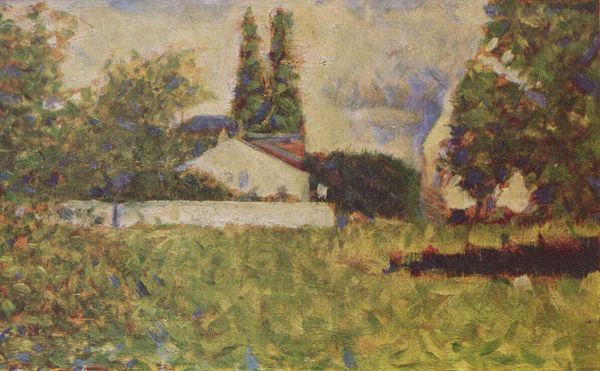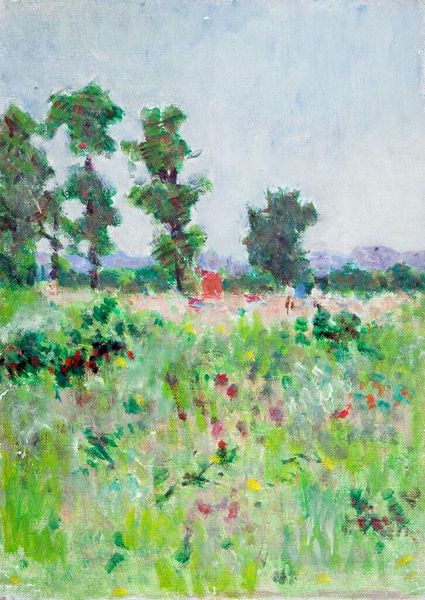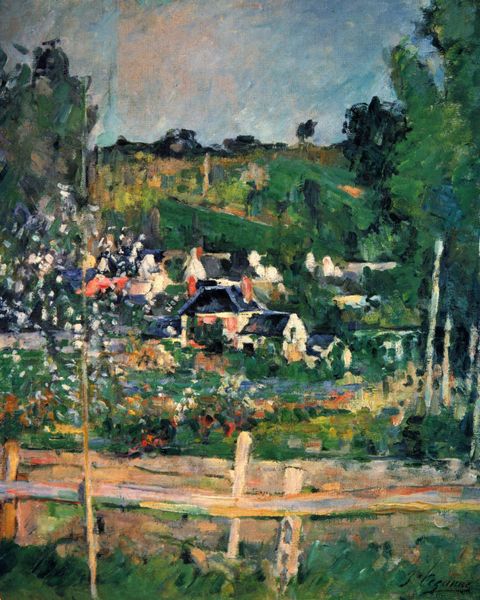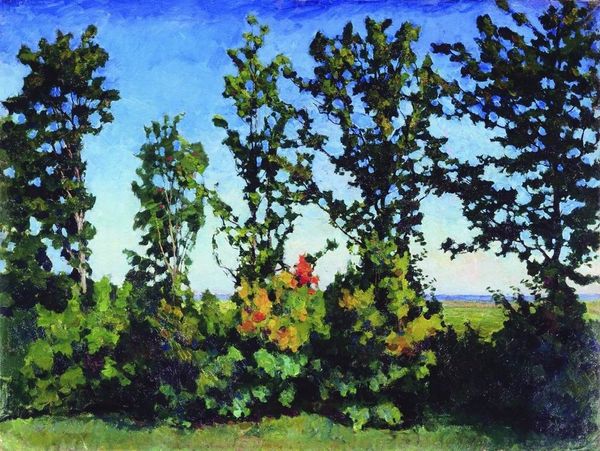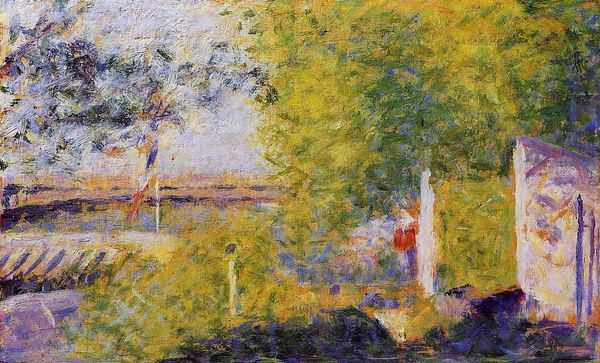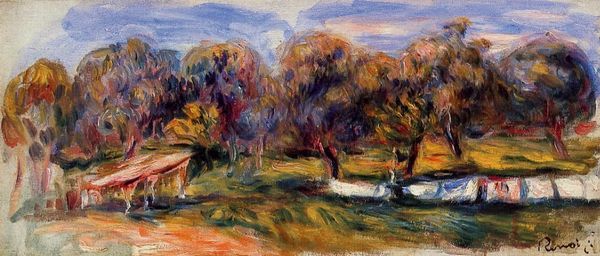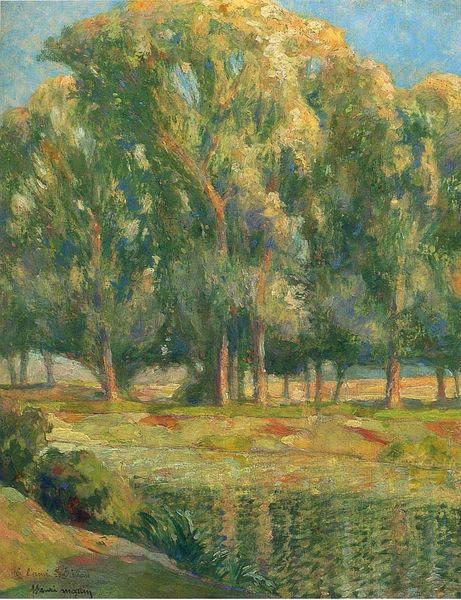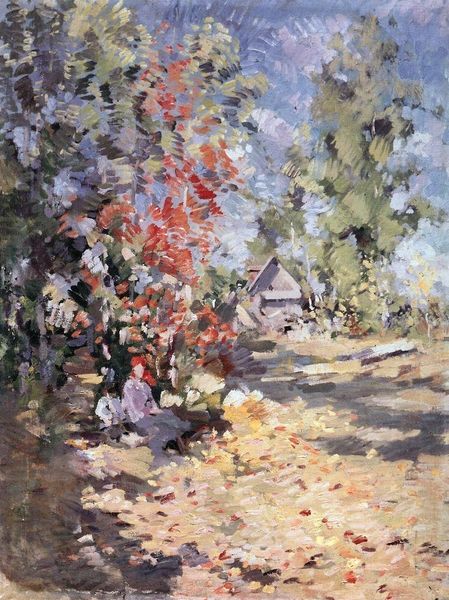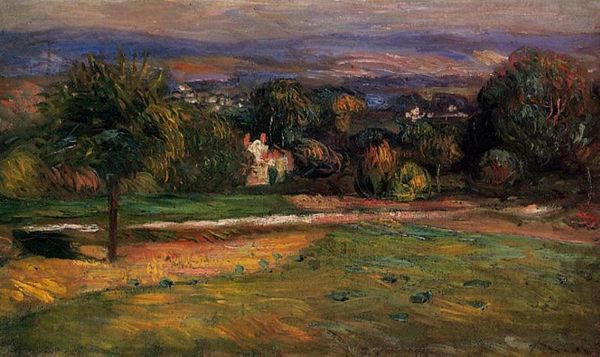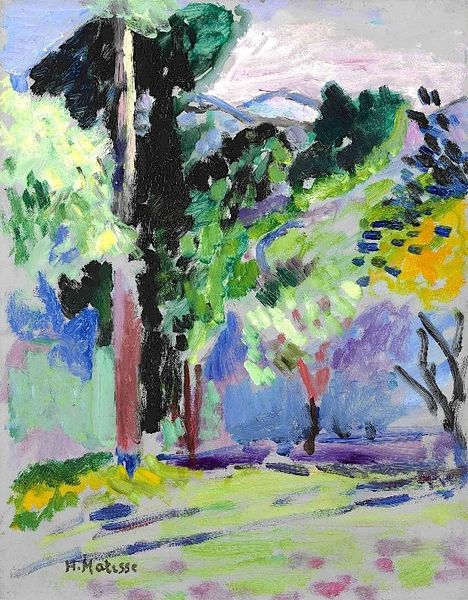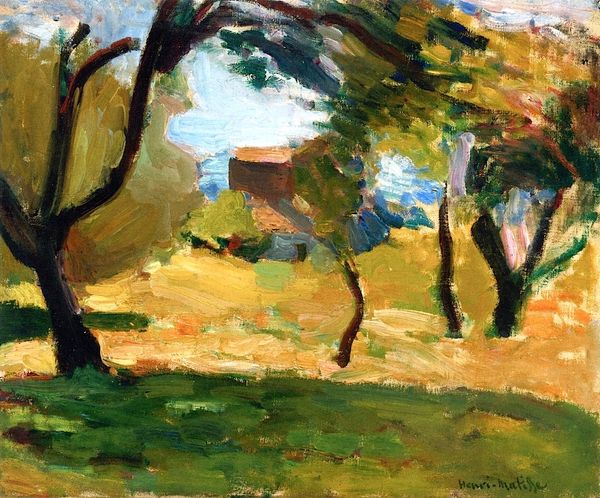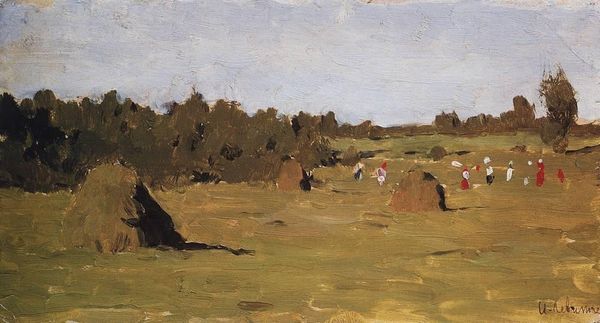
Copyright: Public domain
Curator: This is Konstantin Korovin’s "Hot Day at Moscow," painted in 1921. Editor: It evokes a feeling of hazy heat, that kind of summer languor. Look at how the brushstrokes capture the shimmering light. The materiality of the paint is almost palpable, like thick impasto conveying the weight of the heat itself. Curator: Precisely. The painting is executed "en plein air", emphasizing the transient effects of light and atmosphere, a core tenet of Impressionism. Consider how Korovin juxtaposes contrasting colours - the greens and the reddish browns – to create a sense of vibrancy despite the heat. Editor: I'm intrigued by the visible brushwork and how the strokes blend at a distance but are very apparent close-up. It gives insight into the labor behind the image, challenging the separation of labor and leisure within the painted scene. I also wonder where the paint came from in 1921 Moscow, and whether the scarcity of materials in a time of great hunger impacted his work. Curator: The human figures provide a focal point and add narrative depth. The figures are rendered with the same expressive brushwork as the surrounding landscape, seamlessly integrating them into the scene. Do you agree that the lack of sharp detail contributes to the overall impression of a fleeting moment captured? Editor: Absolutely, that aligns perfectly with its Impressionistic style. But it also blurs the distinction between the figures and their surroundings. It brings forward an exploration of materiality as the subjects melt into a haze of light and heavy application of oils across the scene. Curator: Indeed. The composition, with its horizon line and loose arrangement of trees and figures, creates a sense of balance and harmony. Editor: Overall, viewing this work has deepened my appreciation of materiality, allowing for new avenues of analysis into art's creation and significance. Curator: Likewise, I find my observations now consider both form and context, greatly expanding my theoretical toolkit.
Comments
No comments
Be the first to comment and join the conversation on the ultimate creative platform.
